Everything costs more these days, and that is definitely the case with hunting gear. If you are not seeing as many deer on your property as you would like, throwing out some kind of bait or attractant is the way to go (where legal), but some of those products cost a ridiculous amount, especially if you want to use them for the whole season and need to buy them multiple times. So today I’m going to talk about the cheapest baits and attractants I could think of, and see just how full I can keep your pockets.
Baiting deer can be an effective short term way of getting deer in front of your stand, but in the long run it is not the most cost effective strategy. If you own your hunting land, and it is big enough, habitat improvement is actually the cheapest way to go. With a little hard work, you can make a difference that will last years instead of a couple weeks. Before we get going on that though, let’s cover the best baits and attractants that anyone can use just about anywhere.
Using Baits & Attractants During The Season
Baiting deer is extremely popular throughout the United States. However, it is illegal in a couple dozen states. Hunting regulations are always changing, so you will need to look at your state’s regulations before baiting if you want to avoid a ticket. You should also check on certain deer attractants to see if they are legal. If you have specific questions, you can always call your local DNR and speak to an officer that knows your local laws like the back of their hand.
Baiting has also become illegal in many northern and midwestern states in an effort to reduce the spread of CWD. So if you live in a place that has been exposed to CWD, please do not bait. It really is not worth spreading CWD and seeing a large majority of the deer population slowly die from the harsh disease.
You can get as complicated as you like with attractants like mock scrapes and such, or as basic as possible with a pile of bait. Baits and attractants are going to be a short term solution to your deer problem. At the end of the day, habitat improvement can bring in more deer than a corn pile ever will, but that is not possible on every property. If you lease your land, or if it is fairly small, or if you hunt WMA’s, habitat improvement is not ideal.
Plus, late in the year generally isn’t the best time to make big investments in land improvement or doing things such as bush hogging, logging, and the like. It’s too close to deer season and you risk running the deer off by creating a large, intrusive presence. Instead, here are some low-impact and fairly inexpensive ways to get deer regularly in front of your stand this season!
1 | The Basic Corn Pile
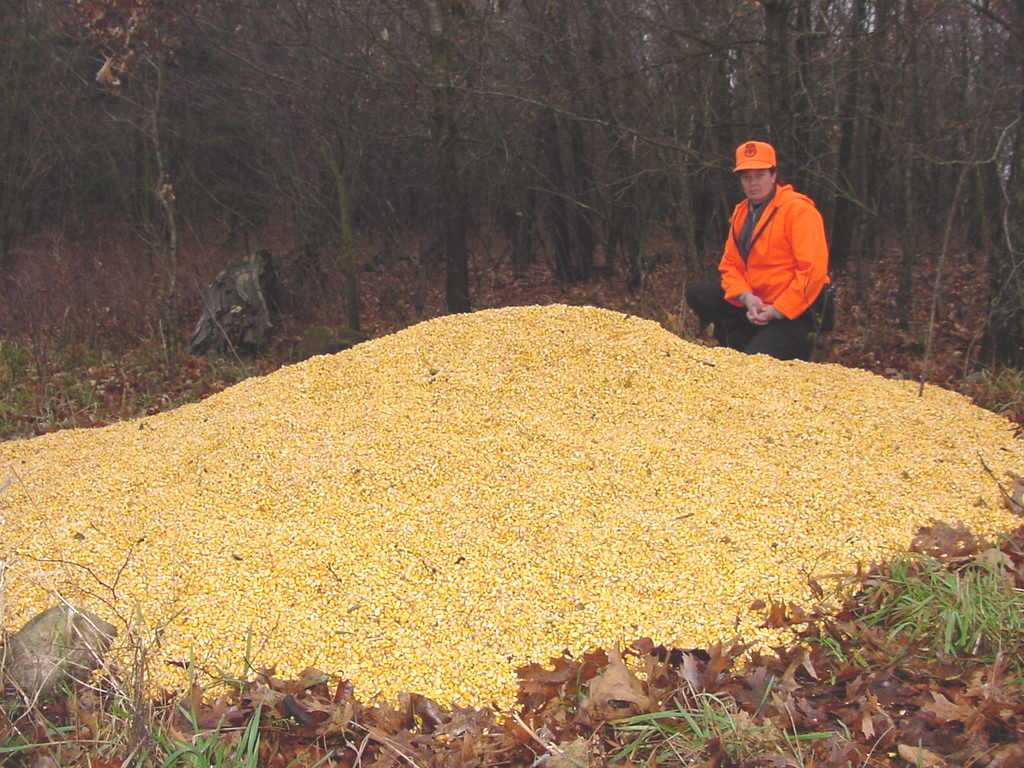
Corn is by far the most popular bait used to lure in deer. It is extremely easy to find, and everything in the woods likes to eat it. You can get a 40 pound bag of corn for around $10 to $15 depending on your location and the brand. Although you might be able to get corn quite a bit cheaper at a local feed store.
Any kind of whole corn will do, it does not need to have a deer on the packaging to attract deer. Plus, when you buy “deer corn” at the sporting goods store, you are certainly paying extra for the convenience and the deception that “deer corn” is actually a thing.
I have baited with corn plenty of times throughout the years, and it generally works best for me just as the season is ramping up. I like to put a bag or two in a hot area, and then hang a trail camera. It usually works out pretty well, but if you put out corn too late, and the acorns start dropping, the corn will mold over and not even bring in a raccoon. After the rut winds down in December and deer go back to focusing on food sources, corn piles become a good option again.
This may be a bit obvious, but if you hunt in an agricultural area, do not waste your time on a corn pile. If you or your neighbor have corn fields, a corn pile is not going to bring deer in.
2 | Cereal Grains
Corn isn’t the only ag product that deer love! You can get a bag of wheat, rye, barely, or oats from the local feed store for much less than what you would pay for corn. Deer also love it! Grains are a great source of protein for deer, and pouring out a few pounds in an area that doesn’t usually have grains is a good way to get their attention.
You can also grow any of these grains. This may be a little more expensive because you need a lot of seed, and the equipment to plant it in a large area. Although this is likely a cheaper option in the long run because you will get much more crop for the money, and once you buy the equipment for planting, you will have it until it breaks.
3 | Rice Bran
This one is a favorite of Missouri and Arkansas hunters and those who live near rice-producing regions. Rice bran is different from corn and anecdotally attracts more bucks than does. Solid scientific studies are difficult to find, but rice bran in feeder outperforms plain corn when it comes to garnering trail cam pictures of bucks.
While you might have to take my word for that, rice bran isn’t much more expensive than corn. Plus, it’s likely a novelty in your area, which in and of itself makes it worth a try because your neighbors probably don’t use it. Rice bran is also better for deer than corn, and different sources say they actually prefer the taste.
4 | Peanut Butter
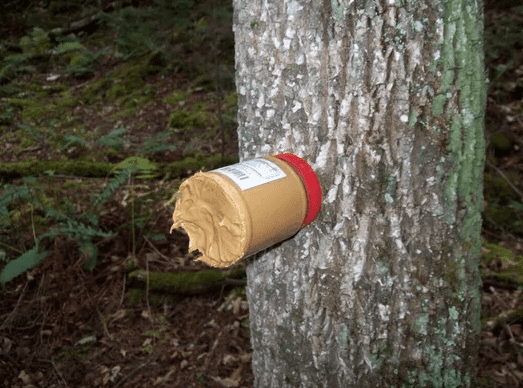
Peanut butter is a tried and true bait that deer definitely love. You can get store brand peanut butter for around $3, and it will last a while too. You simply unscrew the cap, nail it to a tree, cut the bottom off the peanut butter jar, and screw the top back into the cap on the tree. Then you have a whole jar secured to the tree, and deer can lick as much as they want to.
Peanut butter works best during the winter thanks to its high protein and fat content. Those are the best kinds of nutrition that deer can get while recovering from the rut, as long as it doesn’t freeze.
5 | Home Grown Fruits & Veggies
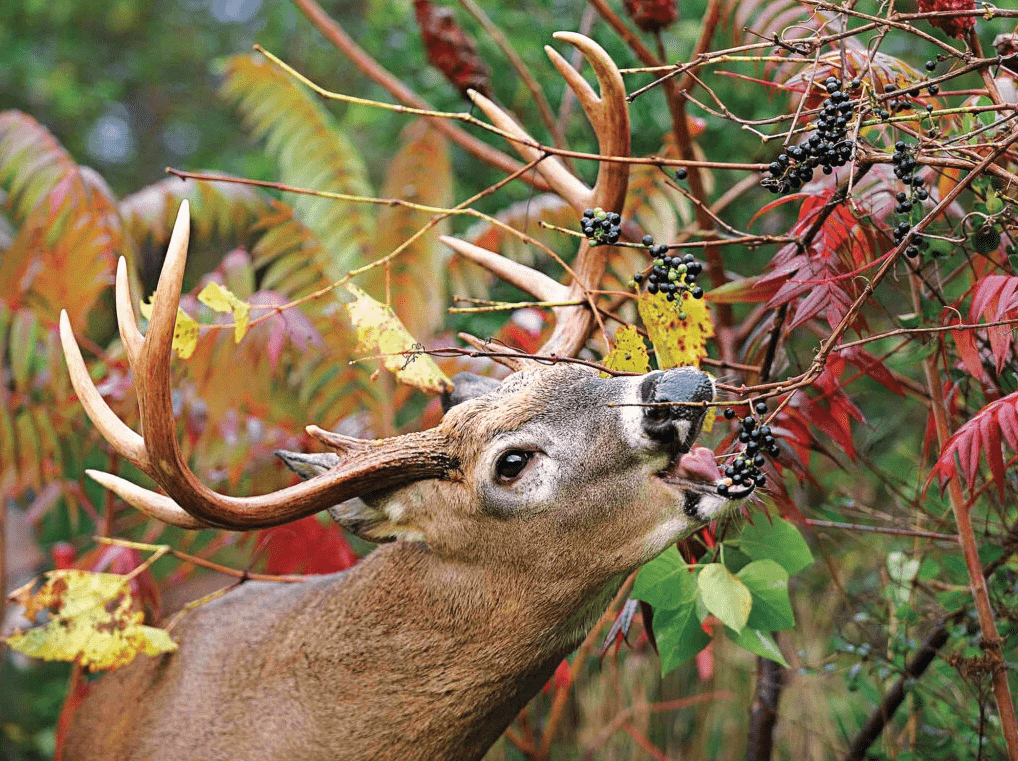
A large majority of hunters also grow a vegetable garden throughout the summer, and if you are like me, you wind up growing way more than you can eat or give away. We usually have to fight the deer all summer to keep them from killing our plants, but if we manage to do that, we can use our excess veggies as a great, nearly free, bait!
If you can save whatever you grow, and don’t want to eat yourself, until around august or september, your crop will make a great bait pile. Fruit is the same, and maybe even better thanks to its high sugar content. If you have fruit trees, gather your crop up before it drops, and put them wherever you want to see deer in the woods. You can also buy fruit or vegetables to use as bait, but it is a lot more expensive than growing it yourself.
6 | Homemade Jello Deer Bait
The jello powder that you use to make the wobbly goodness, is just as attractive to deer as it is to me. It can also be used in a lot of different ways. You can use it in just about any homemade bait, but the most popular method may be to just pour it over another bait pile, which works just fine.
Although another method that I saw was to mix it with sugar and salt and put the mixture in a closed paper bag. These are often called “Jello Bombs”. The outdoor elements will do a fine job of mixing the components up and getting their smell in the air. There are numerous hunters that post trail camera pictures of deer tearing these little bags up and licking the ground down to the dirt trying to get it all.
7 | Homemade Molasses Deer Bait
Molasses is another sugary substance that is a nice addition to any bait pile, although you can also use it to make deer licks, a lot like a salt lick would be. With 2 parts sugar, 1 part water and molasses, and a little butter and salt, you can mix up an awesome deer lick. You just need to boil your mixture in a pot until it gets to about 270 degrees, and then let cool. Before it turns solid, you can pour it into a mold and get the shape you want it to be while it is in the woods. Let it cool all the way, and take it to the deer! They will tear it up.
8 | Homemade Kool Aid Deer Bait
Kool Aid mix is almost entirely sugar by itself, but it can be used in some pretty neat mixtures to bring in deer. Of course, you can sprinkle some Kool Aid over any old bait pile and it will add a bit of sweetness to it that the deer are sure to love. Although you can make a deer bomb with this just like the jello.
You want to use equal parts salt, baking soda, and sugar. Then add in two packets of your favorite Kool Aid for every three pounds of the former mixture that you have. You can put the dry mixture into a paper bag once again, and put it in front of a trail camera. The deer will go crazy over it!
9 | Tarsal Glands
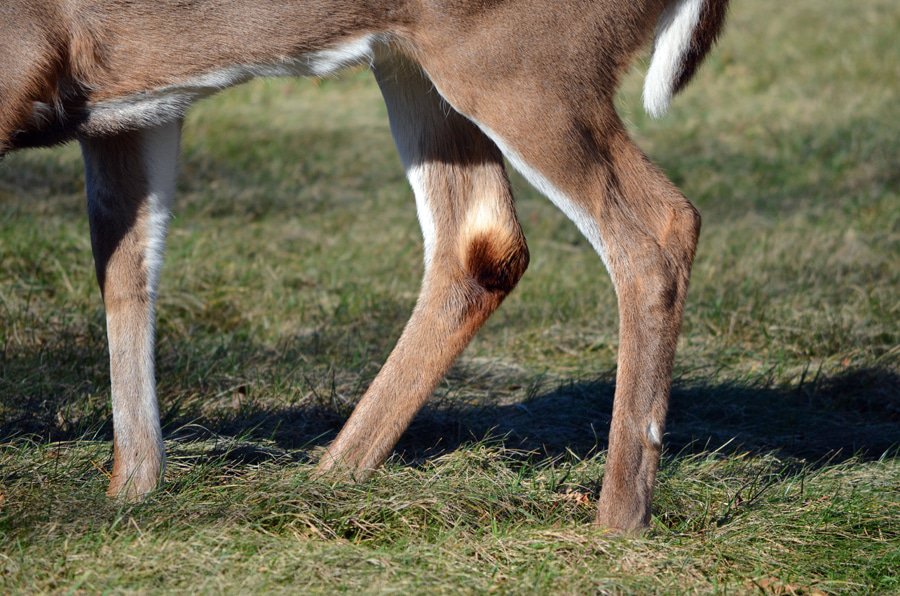
Moving away from baits and more towards attractants, this is one that I have used for years. Tarsal glands aren’t something you can buy from the store, but they have that valuable doe urine on them that people pay top dollar for. When my dad and I used to go up to Kentucky for a week to hunt, it wasn’t uncommon to shoot a deer (buck or doe) on one of the first few days. We took the tarsal glands off it and put one near each of our stands the next day, and I have watched dozens of deer walk right up to that gland. The best part? It is totally free!
10 | Spike Your Feed With Flavor
This isn’t my favorite attractant, because it is not super cheap, but it does serve a purpose. If you are hunting over a bait pile and you know your neighbors are too, you might want to spike that pile with a little something extra. You can spike it with something like Big & J BB2 that adds an apple flavor to your feed of choice.
These kinds of attractants have a very strong aroma that deer can pick up from a ways away. So the idea is that it brings in more deer to your bait. While that may or may not be true, BB2 is also fairly good for deer and it is made of plenty of protein and other nutrients that they need, so the extra cash you spent definitely isn’t wasted.
11 | Mineral & Salt Licks
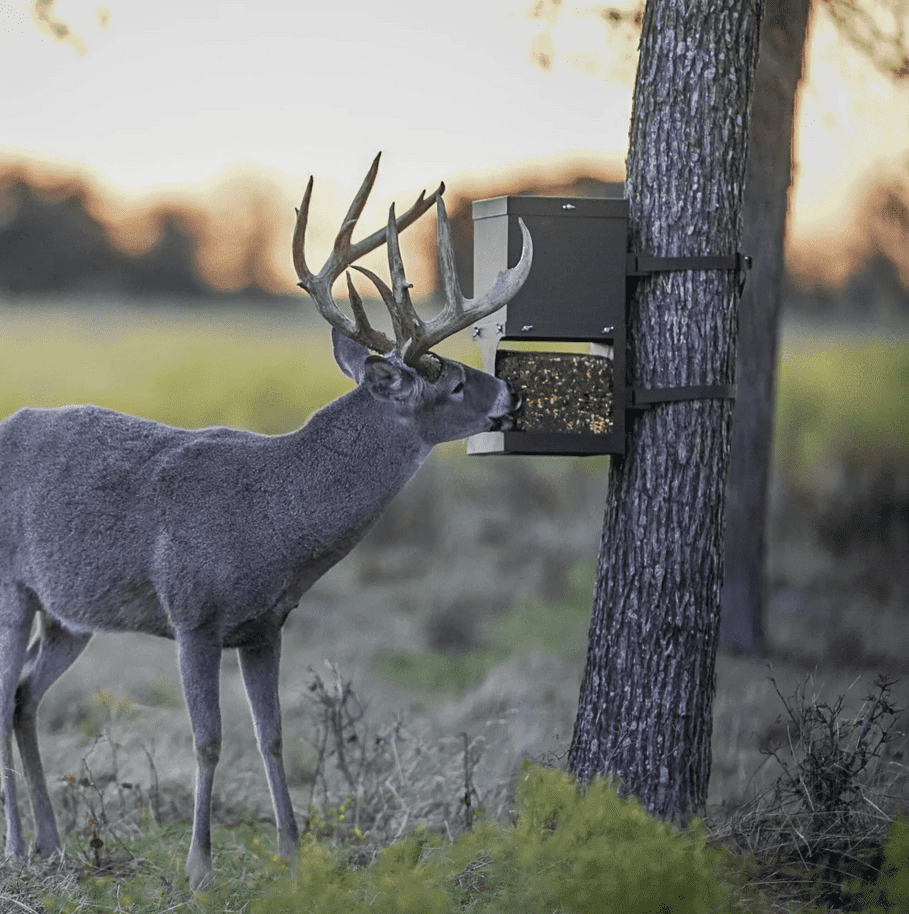
Beginning in the spring and continuing well into the summer, both bucks and does crave minerals such as calcium, phosphorus, potassium, sodium, sulfur, iron, copper, zinc, and more. The easiest (and cheapest) way to get deer at least some of these can be found at a feed store.
Cattle licks can be had for $10 or less, and these basic blocks help does with milk production and bucks with antler growth. A sulfur block is similarly priced and has the added benefit of reducing the amount of ticks that are found on deer. Just be careful where you buy, because a simple picture of a deer on the packaging can jack the price up with no extra benefits.
Also make sure that a “mineral block” is not just full of salt. Most mineral blocks or feed is pretty much a scam and does nothing for your deer in the long run. If you want to learn more about that and know what to look for when you go shopping for minerals, read my more detailed blog post on the topic here.
12 | Mock Scrapes
No, you don’t have to get a fancy dripper system to make a mock scrape. All you need is a boot and a full bladder. Find a tree with a branch about waist high in the vicinity of a rub, bedding area, or feeding area. Scrape out a circle about three feet in diameter, and to “sweeten” the deal, mark it with your own scent. The smell of bare earth is usually enough to attract a buck’s attention, but that little extra makes it even more appealing.
One famous study by James Kroll AKA Dr.Deer (who I have met) showed that deer would come to just about anything in a mock scrape. They tested scrapes with buck and doe urine, human urine, mock scrapes with nothing in them, and even scrapes with new car smell sprayed on them. They all attracted deer! The empty mock scrape attracted the least deer, so I would recommend adding a little of your own scent when you make a scrape.
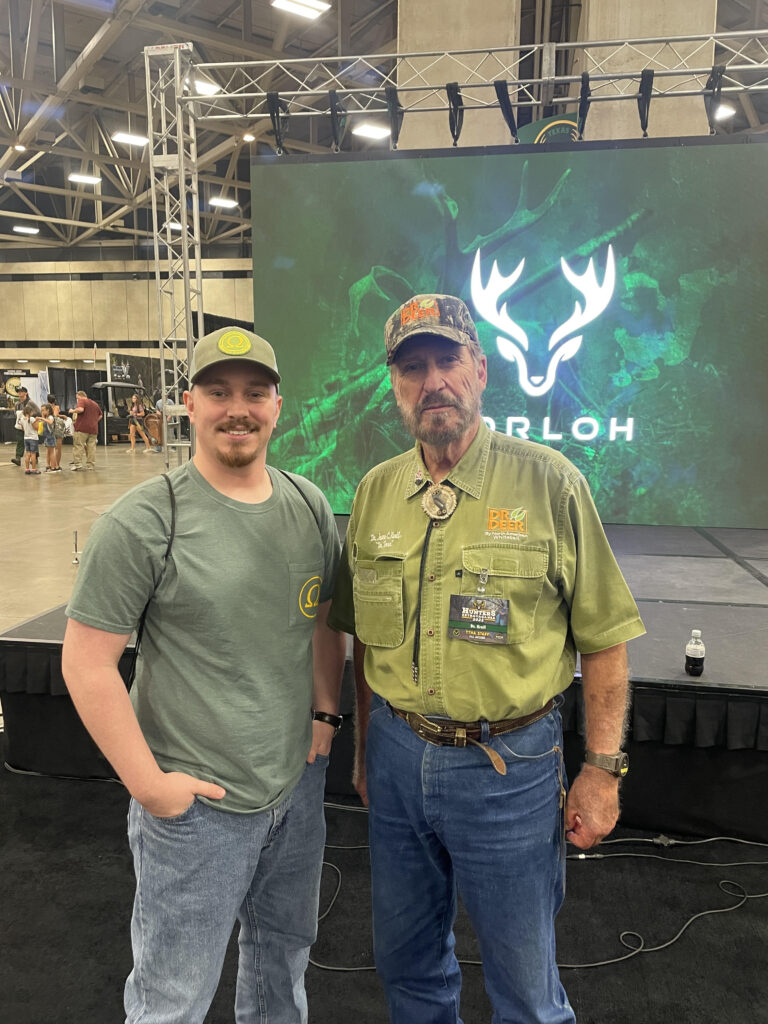
13 | Doe estrus
While we’re on the subject of natural scents, doe-in-heat estrus is a longtime favorite of those wanting to appeal to a buck’s strongest sense, his sense of smell. Doe estrus isn’t legal in all states, especially those with CWD and EHD present. But, a bottle can be had for a little over $10, and that’s a deal in most people’s books.
If you use doe pee, make sure you’re getting the most out of it. Hanging wicks are great, but you can fashion some of your own wicks from frayed rope to save a few dollars.
You can also use a dragline on your way to your stand. Draglines maximize the effectiveness of estrus scent by drawing a beeline right to your stand. Cut a 3 foot length of rope, fray the end of it, and dip it in the estrus bottle. Tie the rope around your ankle then head to your stand like normal. The result is a “path” of scent that brings bucks right to you. If you have doe urine in a spray can, simply spray a little of it on the bottom of one of your boots before you walk to your stand.
Cheaply Attracting Deer With Habitat Management
This is when you’re either getting ready for next season or sitting on the sidelines after already filing a buck tag. If you don’t think about deer season 12 months of the year, you’re getting beat by your neighbors who do. There is plenty of work to do in habitat management, and if you want more deer on your property long term, here are some quick tips to get you started.
If you want a more detailed guide on these habitat management tips, read my other article titled “Why You Aren’t Seeing Deer On Your Property”
14 | Plant Some Real Food
Feeding deer year-round promotes habitual use of desired areas, say, near your stands. It’s no different than feeding during the season, but making a food plot and feeding your deer real nutrition that doesn’t come out of a bag is much better for them. However, some states, especially those with CWD/EHD restrictions, prohibit feeding year-round, so a food plot is really the only way you can feed deer within the law.
Instead of using a tractor and tilling, seeding, weeding, and everything else that comes along with planting a food plot, try a no-till food plot that only requires a bag of seed. It’ll cut down on racket in the woods, time spent in process, and of course, cost.
These are generally fast-rooting and hearty crops that take almost no effort to seed, and come in a variety of offerings that are rich forage high in protein and minerals. In some cases they come with extra mast like radishes. There’s no downside to trying this. Get a sack, find a relatively clear or sparsely wooded area and broadcast it before a light rain.
A cold-weather crop such as beets, turnips, or radishes can be dynamite for months well into the winter. There are numerous options that are both easy to use and affordable. These cold-weather bulbs have a two-fold attraction for deer. As they sprout, the broad leaves are appealing and then when the ground freezes, the bulbs turn sweet and the deer will actually dig them up.
15 | Deer Need Water!
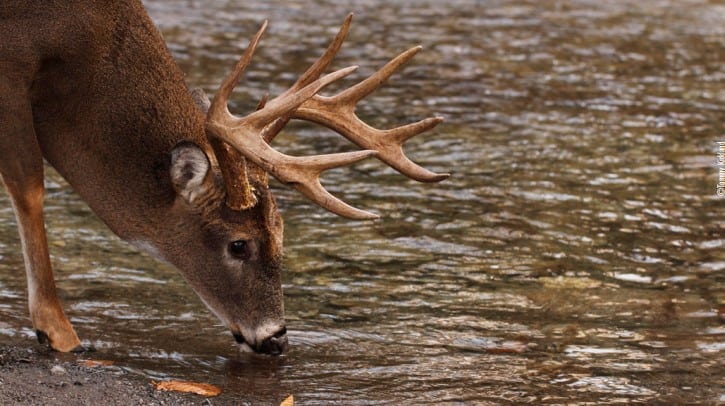
If you live and hunt in an arid environment, a pond might already be on your radar, and if not, creating one doesn’t have to break the bank. You don’t need a backhoe or heavy equipment to create a deer magnet oasis. All you need is a cattle tank and the help of a few friends.
Digging a hole and submerging a tank is a surefire way to get whitetails coming to quench their thirst. It’ll not only concentrate them, but alter their movements to and from the watering hole so you can track them easier. If you don’t know of a water source on your property, or they are few and far between, adding water might be the best thing you can do for your deer.
16 | Controlled Burning
Striking a match is about as close as it gets to free, but it’s also an option that has the potential for hefty consequences. Burning on your property in the spring can be a tool for knocking back scrubby, and removing thick undergrowth. Getting rid of this mess exposes the soil to sunlight, permitting fresh, green growth to take hold, which is much more attractive to deer as browse.
The how-to aspect of a controlled or prescribed burn is well beyond the scope of this article, but be sure you know what you’re doing and have help from either your state forestry commission or a knowledgeable partner before lighting it up.
Despite what you might think, burning isn’t nearly as intrusive as, say, digging a pond or having a logging crew thin out your timber. Burning is natural, and not unfamiliar to deer. However, use it sparingly and in smaller tracts for maximum effect. Burning in winter can also be less risky, as there can be less chance of your fire getting out of control.
17 | Tree Management
If you don’t have much land or want to freshen up your shooting lanes, create new travel corridors for deer, or just get rid of invasive tree species, consider selectively removing trees through hack & squirt. This is a simple process where you mark the trees you want to get gone, hack a “cup” into the trunk at about shoulder height, and squirt the wound with herbicide ensuring that it stays within the cup. This will kill the tree, and allow the surrounding trees to flourish. You can also do the same thing with hinge cutting.
Usually, we want to remove trees that don’t do much for whitetails. One of the best trees you can have on your property is the white oak. If you have white oaks, killing the surrounding trees will certainly help them out, which will lead to better acorn crops in coming years. Even if the white oak is still young, I would avoid cutting it down at all costs.
If you’ve got more than a few acres, it might be worth a logger’s while to come in and take a few trees here and there. Select cutting is where either you or a logger mark trees that are valuable as timber and let a logging crew do their thing. It is likely best to get the help of the forestry service, they can tell you about diseases in your area, and give you a good idea of which trees need to be removed.
If you have enough primo timber, select cutting is not only cheap but can actually make you money. Once the logger pays his crew and gets paid from the mill, he might have some left over he’ll share with you. But, make sure you get an estimate and work this out before the saws are fired up. Because of the fluctuating and potentially dubious nature of wood prices and logging, it’s best to get multiple quotes and a few references on a crew before proceeding.
18 | Predators Control
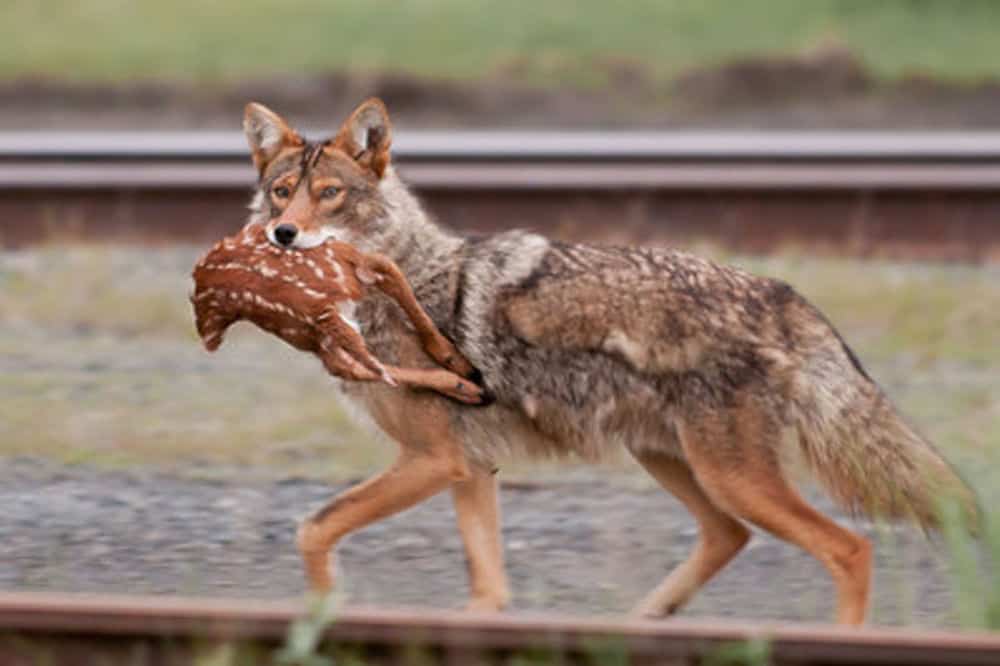
This is not only beneficial to deer, it’s also great for turkeys, doves, rabbits, and other game that are preyed upon by coyotes, wolves, bobcats, and more. This might also be one of the more fun ways to attract deer to your property. Knocking back predator populations is usually unrestricted in terms of methods and timing, so in general, you can hunt them year-round with a gun, crossbow, bow, or whatever. But, check your local laws first.
Predator control will not only make deer more comfortable on your property, but it will also increase your fawn survival rate. So the amount of deer born on your property year over year will also increase, which is always a good thing as long as you have enough food for them, and manage those does.
19 | Create a Sanctuary Area
This is different from reducing the time you spend in the woods in the offseason. Creating a sanctuary means that you’re finding a place where the deer want to be, whether it’s because it has food, bedding, water or all three and staying out at all costs.
You don’t step foot inside this zone…period. When hunting season is on, the only time it’s permissible to enter the sanctuary is to track a wounded deer. Creating a safe haven that deer use year after year ensures that they’ll be predictable in movement in and out of it, which can be revealed through scouting with trail cameras.
You are going to establish a sanctuary area, right? RIGHT? If you do, it’s all for nothing if you don’t keep out. Knowing that there’s a honey hole on your property can offer a strong temptation to venture in and set up a camera, but don’t do it. You’ll totally negate the advantage it offers by barging in and mucking about.
Insead, scout the perimeter for trails and set up cameras there to get an idea what’s using the sanctuary and when. Of course this is only something that you can do on private property, and you need to be sure that you don’t have trespassers or eager hunting buddies ruining it.
20 | Stay Out of the Woods!
As difficult as this might be for those of us who ride four wheelers and enjoy camping and hiking, the less you’re in the deer woods, the more the deer will be around. Running ATVs and side-by-sides is a hoot, but it’s definitely a disturbance to deer as they go about their seasonal routines. Find another place to ride and minimize your presence where you hunt.
This is property wide, so it is a bit different from a sanctuary area. I had a guy ask me once where he should hunt on his property, and after talking to him and looking at some maps, he told me he logged about 50% of it as his full time job, and about 40% more of it was alfalfa fields that were all in between the patches of woods he was logging. I had to help him come to the realization that he could certainly find a few places to hang a stand, but while he was logging that relatively small property all year, the deer were not going to spend a ton of time in his woods.
The Last Bit of Bait
Deer hunting is, at its core, a matter of learning about deer, their habits and movements, then capitalizing on your knowledge for a successful hunt. The more you know, the more successful you’ll be. However, there are ways to increase your odds for success, and they run the price gamut from free to exorbitant.
These year-round tips don’t require a Ramen noodle diet or second mortgage and are useful for most every deer hunter. If you want a basic bait that you can use year after year on your hunting lease, corn will work great but there are cheaper options listed here. If you own your hunting property, you can attract more deer over time with quality habitat improvement, most of which just costs a bit of sweat. Either way, you should be able to bring in plenty of deer with any of the methods from this article. Good luck this season, and good luck with your bait!
Sister Post | Why You Are Not Seeing Deer on Your Property
A sister post is another post that I have written that follows along with the same topic as the one you just read. After reading this article, you will probably like this next one even more! Here is a little teaser…
One of the most aggravating things in the world, as a hunter, is to sit in your stand all day and not see a deer. This is especially annoying if it happens often. If you are hunting an area and are not seeing any deer, what are you doing wrong? Well…Keep Reading
Give Deer a Reason to Be on Your Property
Generally, most tracts of land will have enough resources to support a population of whitetail. That population may be small, but there are steps we can take to increase how many deer a particular property can hold…Keep Reading
You’ve Got Deer Sign but Haven’t Seen Deer
If you are hunting areas that have a lot of tracks but you are not seeing deer, those deer may be visiting that area at night and not during the day, so you need to…Keep Reading
Thank you for reading my article! I hope you enjoyed it, and if you have any questions or feedback, please send me an email at [email protected]. If you want to learn more about me or Omega Outdoors, visit my About Page. Otherwise, I hope you have a great day, and check out some of my other articles while you’re here!

